by Editor | Jun 24, 2013 | New Articles, Restaurants
By Elena del Valle
Photos by Gary Cox

Sauce for the langoustines
We enjoyed our lunch at Rech, a well known seafood establishment in Paris, France. We were drawn to the restaurant because it was a new addition to the Alain Ducasse owned and managed properties portoflio. We have dined at several of the famous chef’s restaurants with pleasure.
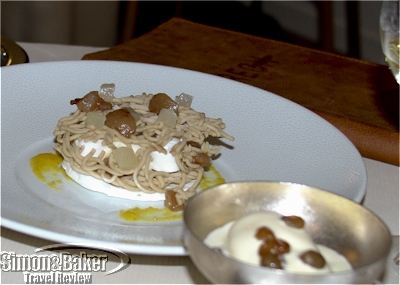
Mont Blanc de tradition, poire Pochée a la vanille
Well prepared seafood dishes, attentive English speaking staff, understated upstairs decor and a desirable location on the busy Avenue des Ternes in the seventeenth arrondissement would temp us back in the future. Favorite dishes included a langoustine starter (Délicat velouté de langoustines, d’autres marinées a cru au citron vert) and the Grenobloise-style skate fish (Aile de raie a la grenobloise). On a return visit I would also order the restaurant’s Camembert (Le fameux Camembert de Rech).
by Editor | Jun 17, 2013 | Books, Food
Article by Elena del Valle
Photos by Gary Cox (except book cover and author courtesy of Sterling Publishing)
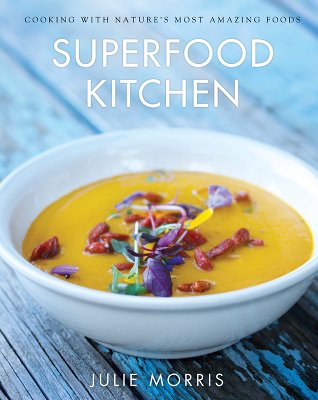
Superfood Kitchen book cover
When we first looked at the recipes in Superfood Kitchen Cooking with Nature’s Most Amazing Foods by Julie Morris (Sterling Epicure, $24.95) we were taken aback by the number of ingredients we were unfamiliar with and the difficulty in finding them in our suburban area. In the end, we had to shop at a number of stores and order part of the ingredients online. What we liked about the recipes we tried was their taste, simplicity and nutritional value. Morris is executive chef for Navitas Naturals, a superfood seller.
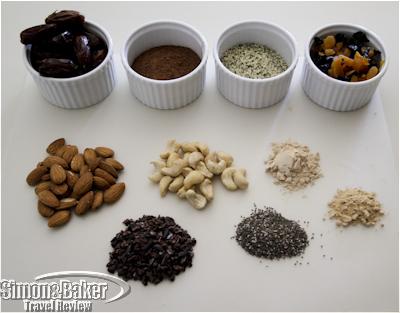
The energy bars required ingredients we had to buy
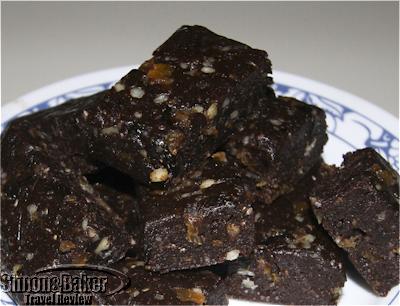
Our energy bars, made with superfoods
The 237-page hardcover book published in 2012 is peppered with color photos and divided into four main parts: Understanding Superfoods, Creating a Superfood Kitchen, Recipes, and Extras. Morris beings by defines superfoods as nutrient rich and beneficial for health and well-being. The idea behind her book, she explains, is to combine flavors and textures in a nutrient rich way toward a “collection of some very super parts.” She goes on to list and define the ingredients of the superfood kitchen and their nutritional benefits. Morris, a natural-food chef, advocates whole plant-based foods and superfoods.
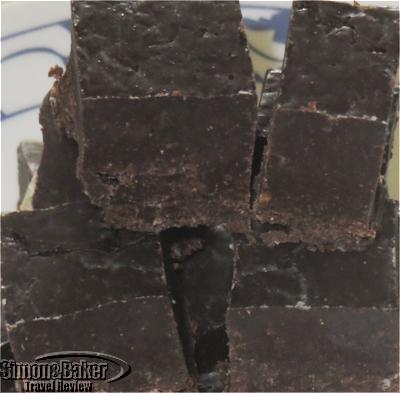
The Dynamite Fudge has become a favorite dessert
Cacao, she explains, is one of the most antioxidant-rich foods. It also offers “useful quantities” of iron and calcium as well as phytochemicals and amino acids that aid in elevating mood brain chemistry. It tastes like strong chocolate without the sweetness, she goes on to say, and improves when served with mesquite powder, carob, dates or ingredients with caramel flavors to soften the bitter edge.
She says maca is a root from the Peruvian Andes, and that Inca warriors relied on it for stamina and strength in battle. As an adaptogen, she says, the plant food may counter the different stresses of the body. It provides energy and combats fatigue, according to the book, without stimulating. It also offers sixty phytonutrients including sterols believed to help block cholesterol.
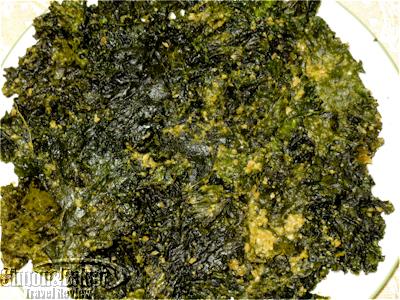
We often have kale crisps in between meals
To date we have tried four recipes: Chocolate Energy Bar from the Breakfast section, BBQ Sweet Potato Fries from the Sides section, Cheesy Kale Crisps from the Snacks section, and Dynamite Fudge from the Sweets section. On more than one occasion we adjusted the recipe to the ingredients we could find or to our preferences. For example, we left out the chili powder and cayenne pepper powder in the fries recipe.
The first time, we tried the fudge we substituted the maqui powder with additional quantities of the other ingredients in the recipe because we had been unable to find the maqui powder in our area. Eventually we received the maqui powder in the mail and made another batch of the fudge. We liked both fudge types, with and without the maqui.
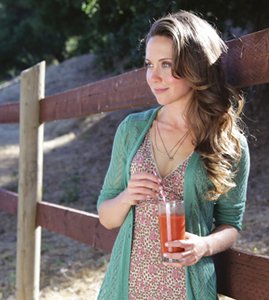
Julie Morris, author, Superfood Kitchen
The recipes we have tried have become regulars in our dietary rotation. We keep energy bars and fudge in the refrigerator and make fresh sweet potato fries and kale crisps the day we eat them. As time allows we plan on sampling additional recipes.
by Editor | Jun 10, 2013 | Accomodations, New Articles
By Elena del Valle
Photos by Gary Cox
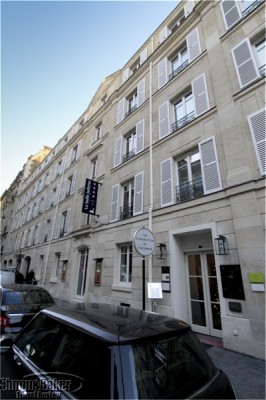
Hotel and Spa La Belle Juliette
The Hotel & Spa La Belle Juliette sits on a quiet street in the Latin Quarter of Paris, France. It’s conveniently located within one of the city’s most desirable neighborhoods. That alone would have attracted us for a look. There was much more to the hotel. Electronic and luxury amenities, gourmet treats, custom fragrance samples, bespoke decor, a size appropriate spa with plunge pool, attentive service, and English speaking staff were among the features we liked.
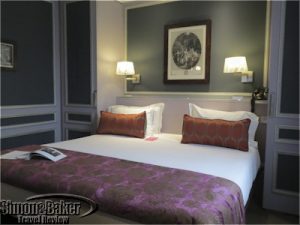
Decor on each floor represented a period in Julliette’s life.
Our small rooms were pretty and stylish with modern amenities, handsome bathrooms, individual temperature controls and room service. The hotel’s common areas and the rooms followed a decorative theme focused on the life of Juliette Recamier, a historic figure popular in her day.
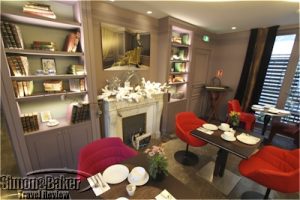
The breakfast area con the ground floor
Friendly youthful staff spoke English and appeared eager to help. The basement level small spa was worth a visit with a steam room, unisex changing room with shower, treatment room and a color light filled plunge pool. The single spa treatment I had was outstanding.
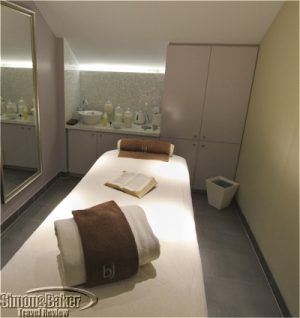
The tidy spa downstairs was an unexpected bonus
Breakfast choices though few were good. I especially liked the rich hot chocolate and the deli platter which while not inexpensive was large and delicious. This jewel of a property was the real deal and would draw us back in the future.
by Editor | Jun 3, 2013 | Food and Wine, New Articles
Article and photos by Josette King
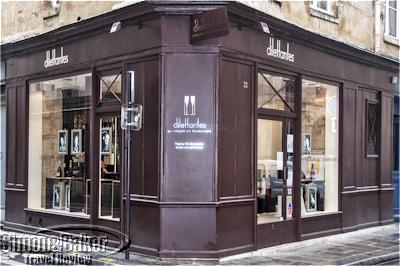
Dilettantes welcomed customers to its elegant corner store front
A far as I can remember, Champagne was synonymous with celebration in my family. From an early age, I understood how exceptional it was: served only on special occasions, in its very own glasses from my mother’s best crystal. And it could only come from the famous region a couple of hours east of Paris that gave it its name. Everything else in thick dark glass bottles with wired corks was just mousseux (bubbly), a word best spoken with a hint of condescendence.
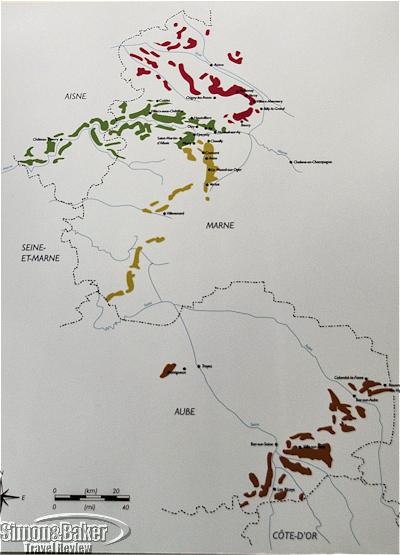
The map of Champagne is a mosaic of small vineyards
Later on, I discovered various major labels of Champagne, and even learned to tell the difference between their offerings. And in my travels around the world, I had many opportunities to experience local sparkling wines that ran the gamut from very nice to best avoided. So I had come to consider myself somewhat knowledgeable about Champagne; until I walked into Dilettantes (22, rue de Savoie, 75006 Paris, France, + 33 (0)1 70 69 98 68, www.dilettantes.fr, champagne@dilettantes.fr), a unique new cave (wine cellar) in the heart of Paris’ historic Left Bank, dedicated exclusively to Champagne.
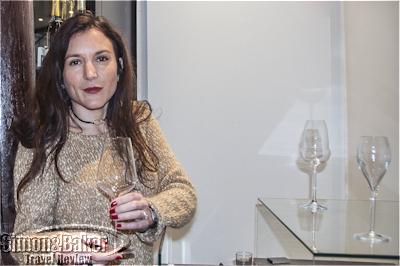
Fanny Heucq introduced me to the various shapes of Champagne flutes for optimal tasting
Located on a side street of the tony 6th Arrondissement, a stone’s throw away from the Seine and the Ile de la Cité, Dilettantes is the brainchild of Fanny Heucq. Born in a family of Champagne vignerons (growers and producers) Fanny knows first hand of the wide variety of high quality Champagnes that are produced in small quantities by artisan growers and rarely available beyond their region of origin. Her goal was to take her Parisian customers past the familiar Grandes Maisons (major world-famous brands) and introduce them to these “other” Champagnes, as diverse as the vineyards and growers that produce them.

All available labels from the various artisan growers were displayed in the cellar
“I wanted to get beyond the labels to focus on the rich diversity of the crus (vineyards) and the passion of the people who work them,” she explained, nodding at the large black and white photographs that line the windows of her elegant shop. They are the weathered faces and the calloused hands of the vignerons that work the various crus showcased at Dilettantes.
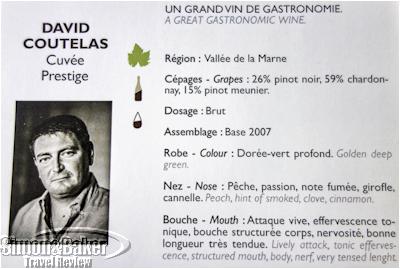
Each bottle was sold with its own identification card
Fanny pointed to a map of the official growing region of Champagne, a mosaic of small vineyards scattered around a 31,598 hectare (122 square mile) area, itself divided into four terroirs (growing areas). “Depending on the soil and the altitude, a different variety of grapes will thrive,” she explained. “In the Montagne de Rheims, it’s 60 percent pinot noir and 40 percent Chardonnay. But to the west, the Vallée de la Marne is just about all pinot noir with barely 10 percent pinot meunier, while a bit to the south, la Côte des Blancs is almost exclusively Chardonnay, and down here,” she pointed due south, “La Côte des Bars is exclusively pinot noir. But the soil is harder here, the microclimates different than around Rheims, so the grapes have a different personality.” Dilettantes featured 25 artisan producers representing the four terroirs, plus a limited selection from a handful of the Grandes Maisons. I was just beginning to grasp the extent of what I never knew I didn’t know about Champagne.
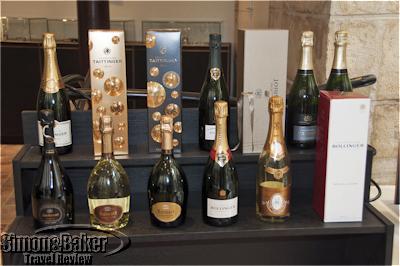
A selection from a handful of world-famous brands was also available
Why Dilettantes? I asked. “Originally, a dilettante meant a passionate amateur, a connoisseur” Fanny pointed out. “Our aim was to create an environment where our customers can discover and appreciate the uniqueness of each cru.” There were many ways to “discover and appreciate” at Dilettantes. First there was the spectacular refrigerated back wall of the street level store. Multiple bottles, 1,000 in all, of the 130 labels from the artisan producers and major brands showcased at Dilettantes were stored there at 10 degrees Celsius (50 degrees Fahrenheit) behind floor to ceiling sliding glass doors. Five meters of wall-to-wall, ready to take home and enjoy Champagne.
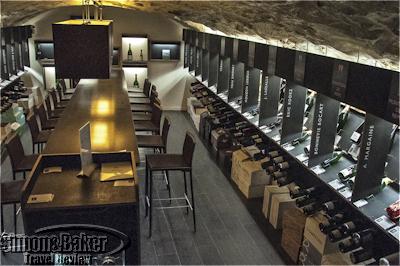
The medieval vaulted cellar was an inviting tasting room
One floor below, the ancient vaulted limestone cellar held an inviting tasting room. Each week, three different labels representing various terroirs were featured for individual on site tasting. Additionally, each month a different grower visited the shop to introduce his or her wines. And there were also occasional thematic tastings (e.g. blancs de noirs, pink Champagnes) lead by Anne Marie Chabbert, an oenologist.

A refrigerated display wall held 1,000 chilled bottles
Whether chilled or at room temperature, enjoyed on site or at home, every bottle was sold with its own pedigree card complete with a picture of the vigneron and salient information regarding the winery, specific vineyard location, grape content, vintage, tasting notes and food pairing suggestions. There was even an entry regarding the type of flute or glass best suited to that particular bottle. I made a mental note to learn more about glasses.
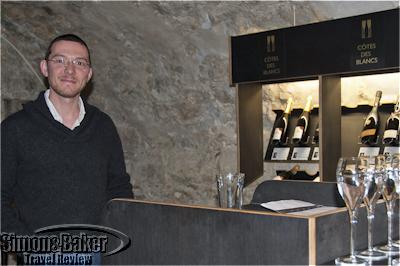
Producer Sébastien Mouzon conducted a tasting of his Champagnes
On my second visit to Dilettantes, Sébastien Mouzon of Mouzon Leroux vineyards, whose family traces back to Verzy (one of the prestigious growing villages of La Montagne de Rheims) since 1780, was on hand to lead a four-wine tasting of his own labels. In addition to an in depth discussion on the particulars of each bottle and what gives it its personality, Sébastien shared a wealth of information on vine cultivation, harvesting and Champagne production. Then came the detail that consolidated the standing of Mouzon Leroux on my personal list of preferred vintners: 70 percent of their production was biodynamic (an ultra-organic wine-making method that focuses on producing naturally fermented wines from organic grapes while healing the vineyard. The biodynamic vintner treats the vines, the soil in which they grow and the surrounding flora and fauna as an interdependent ecological whole).
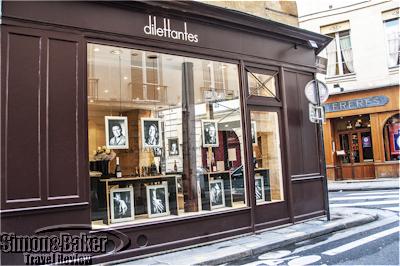
Dilettantes focused on artisan Champagne producers
Warning: Dilettantes is habit forming. I kept finding reasons throughout my stay in Paris to revisit the inviting cave and spent time with its pleasant, knowledgeable staff. I picked up a chilled bottle as a hostess gift on my way to a dinner invitation; I stopped by with a friend for an impromptu tasting of one of the week’s selections; and what about a set of those special tasting flutes, with a couple of well chosen bottles of course, as a housewarming gift for a friend?
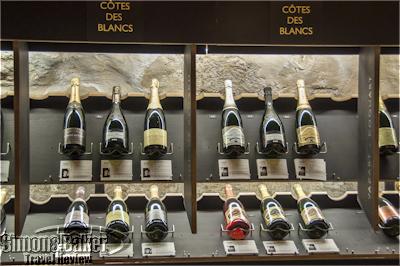
All available labels from the various artisan growers were displayed in the cellar
There is always a good reason to give, and drink, Champagne. And best of all, I enjoyed that on each visit, I left the store with additional nuggets of knowledge about the many facets of Champagne. I already plan to attend one or more of the scheduled tastings on my next visit to Paris. Thanks to Dilettantes’ dedication to making high quality artisan Champagnes readily available in Paris, and educating customers to appreciate them, I may be on my way to becoming a passionate amateur.






























